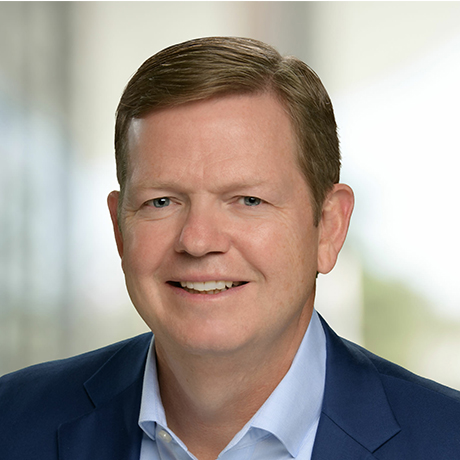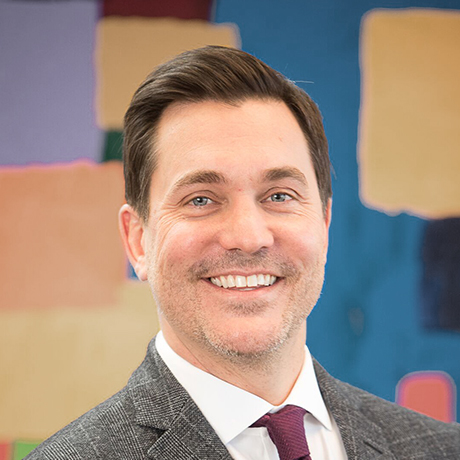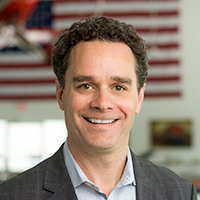Client Relationship & Service
Practice Management
Organic growth isn’t easy to achieve. It requires a firm-wide commitment to building your brand and finding the techniques that work for your team. Through our conversations with leaders of high-growth RIAs, we have identified five principles to consider incorporating into your organic growth strategy in 2021 and beyond. These include systematizing your approach to keeping in touch with clients and prospects, using segmentation and targeted marketing to build connections, adopting a “foot in the door” business development strategy, emphasizing your breadth of services and focusing on firm culture.
To read the full article, become an Insider. Already an Insider? Log in
- Organic growth requires a firm-wide commitment to systems, processes and techniques that help you build your firm and continuously improve.
- Acquisitions and hires may grab headlines, but organic growth is the foundation of building a sustainable practice.
- Short-term solutions created for 2020’s pandemic environment need to evolve into long-term sustainable growth drivers in 2021.
When RIAs think about avenues to growing their practice, it’s easy to focus on mergers, acquisitions and blockbuster hires that immediately move the AUM and revenue needles. But even the most fully aligned, synergy-rich acquisitions will ultimately fail to add value without organic growth.
And while any firm with capital and tools for determining appropriate valuations can acquire growth, there is no one-size-fits-all playbook for how to grow your firm organically. It requires a firm-wide commitment to building your brand and investing in the right processes and techniques that work for your team. It is an exercise in trial-and-error and continuous improvement. This is why organic growth gives firms such a competitive advantage.
“Organic growth is the lifeblood of any organization,” said Kurt Miscinski, president and CEO of Cerity Partners and a member of Capital Group’s RIA Advisory Board. “It’s what creates professional and economic mobility. It’s what allows independent firms to thrive in an extremely competitive landscape.”
Through our conversations with leaders of high-growth RIAs, we have identified five keys to driving organic growth in 2021 and beyond.
1. Systematize your approach to keeping in touch
Carving out time to focus on business development is a common challenge for leaders of independent firms. Responding to clients or addressing internal issues often seems to take priority over sending new business emails or calling prospects to nurture those new relationships.
This is why it is imperative to invest in systems and processes that compel you and your team to stay in regular contact with clients and prospects. “It’s so important to look inward before beginning to look outward to build organic growth,” said Trevor Chambers, private wealth manager at Olde Raleigh Financial Group. “You need to figure out the best practices that will keep you top of mind with prospects and at a regular cadence with current clients.”
Your customer relationship management (CRM) system is a powerful tool for helping your team accomplish this. Beyond just storing client details, your CRM system should provide structure and create a ritual for reaching out to clients and keeping in touch with them. “Many advisors don’t stay top of mind with prospects because other things get in the way, and they don’t adhere to the process that a good CRM system can provide,” added Chambers. “But if you do, it will absolutely yield results.”
2. Build connection through segmentation and targeted marketing
Getting as much value as possible out of your CRM system requires serious commitment. It takes time and energy to ensure that the information is as clean and robust as possible. Why is this effort worth it? Because with the right data, you can take massive leaps forward in segmenting your clients by their needs and pain points. This improves your ability to target prospects who are truly the best fit for your services — and send them information that is actually relevant and helpful for their specific needs. “It’s all about creating more precise sales content and connecting in ways that are hyper-relevant to areas that the target audience is interested in,” Miscinski noted.
Segmenting your clients and prospects in this way allows you to tailor your marketing messages to specific portions of your audience. Most RIAs serve clients at various levels of wealth. Rather than sending the same newsletter to your entire distribution list, RIAs can send a version to ultra high net worth clients that focuses on wealth transfer and private investment opportunities, for example, and a different version for clients with less wealth that focuses on 529 plans and retirement savings. And you could send a third version to clients who are business owners with content focused on that group’s unique needs. But you can’t do this targeted outreach unless you have good segmentation data in your CRM system to begin with.
3. Look for small victories in business development
Instead of trying to hit a home run in your first at-bat with every prospect, be willing to start small to prove yourself and build trust. “On the independent side, there seems to be a tendency to want to wait until you can get a client to trust your firm with everything,” Miscinski said. “But a better approach may be to start with a foot in the door — with one specific capability or service you can provide. Then, by demonstrating your value-add to the client, you can expand the relationship as you build trust.”
Encourage your team to focus on small victories or more limited engagements that can help you establish connection and rapport with prospects. By managing a portion of a prospect’s wealth or providing a limited fee-for-service engagement that addresses one aspect of a prospect’s financial life, you’re in a position to gain trust and assets over time.
4. Go beyond your comfort zone to communicate your breadth of services
Odds are that your firm has missed out on new business opportunities simply because clients weren’t aware of specific services you provide. If your firm’s edge is your investment expertise, for example, it’s only natural that the vast majority of your client communications focus on portfolio management. But don’t overlook opportunities to promote the other things you do for clients, whether that’s quarterbacking the estate planning process, aggregating your clients’ portfolio exposures or conducting due diligence on private investment opportunities. Even if you don’t get paid directly for these services, providing them can improve client retention and lead to more valuable referrals. “Clients have friends. Treat them well, get to know them and demonstrate the breadth of value you provide. Therein lies your most valuable referral source,” Chambers said.
One way to improve awareness of your breadth of services is through case studies. These can be distributed via your website, newsletter or social media. No matter what channels you use, be intentional about letting your clients know about the many things you can do to help them — not just the core services you provide. Also, it’s important to note that case studies must be written in a way that satisfies compliance restrictions related to testimonials.
5. Don’t overlook the importance of culture and leadership development
Culture is a valuable driver of organic growth that shouldn’t be overlooked or taken for granted. Whether your firm takes a service-led, referral-based approach to business development or focuses on operational efficiency and Key Performance Indicators (KPIs), your entire team needs to be aligned with your firm’s culture, values and strategic priorities.
“It’s all about culture,” said Scott Rister, president of Budros, Ruhlin & Roe and a member of the RIA Advisory Board. “We are focused on elevating our firm from more of a service mindset — which has provided an outstanding foundation — to a growth culture that extends beyond just top-line growth. It involves changing our mentality and focusing on driving efficiency and failing fast, all while investing in our team members and building them up.”
When establishing your firm’s culture, values and strategic priorities, it can be helpful to leverage outside resources. One helpful tool that was highlighted by several growing RIAs is the Entrepreneurial Operating System. “We used Traction EOS to transform our business seven years ago,” said Michael Novak, managing director of Wellspring Financial Advisors and a member of the RIA Advisory Board. “A key part of that was culture — we created our core values and made them measurable. Now, we are actually measuring ourselves based on what we say is important to us and holding ourselves accountable to those values.”
Resilience in 2020, growth in 2021
The COVID-19 pandemic forced RIAs to adapt their business development efforts to a very challenging environment, and they did so with remarkable resilience and grit. Advisors embraced new ways to meet with clients, leveraged channels such as podcasts and blogs to broaden their reach, and continued to support their communities.
In 2021, advisors will likely focus on adapting these short-term solutions into long-term strategies that perpetuate organic growth. As you build and refine your organic growth strategy, we encourage you to leverage the resources available through Capital Group’s RIA Insider site, which will continue to focus on organic growth and other pressing priorities for advisors.
To read the full article, become an RIA Insider. You'll also gain complimentary access to news, insights, tools and more.
Already an Insider?
RELATED INSIGHTS
-
-
Traits of Top Advisors
-
Practice Management
For financial professionals only. Not for use with the public.
 Kurt Miscinski
Kurt Miscinski
 Scott Rister
Scott Rister
 Michael Novak
Michael Novak
 Trevor Chambers
Trevor Chambers